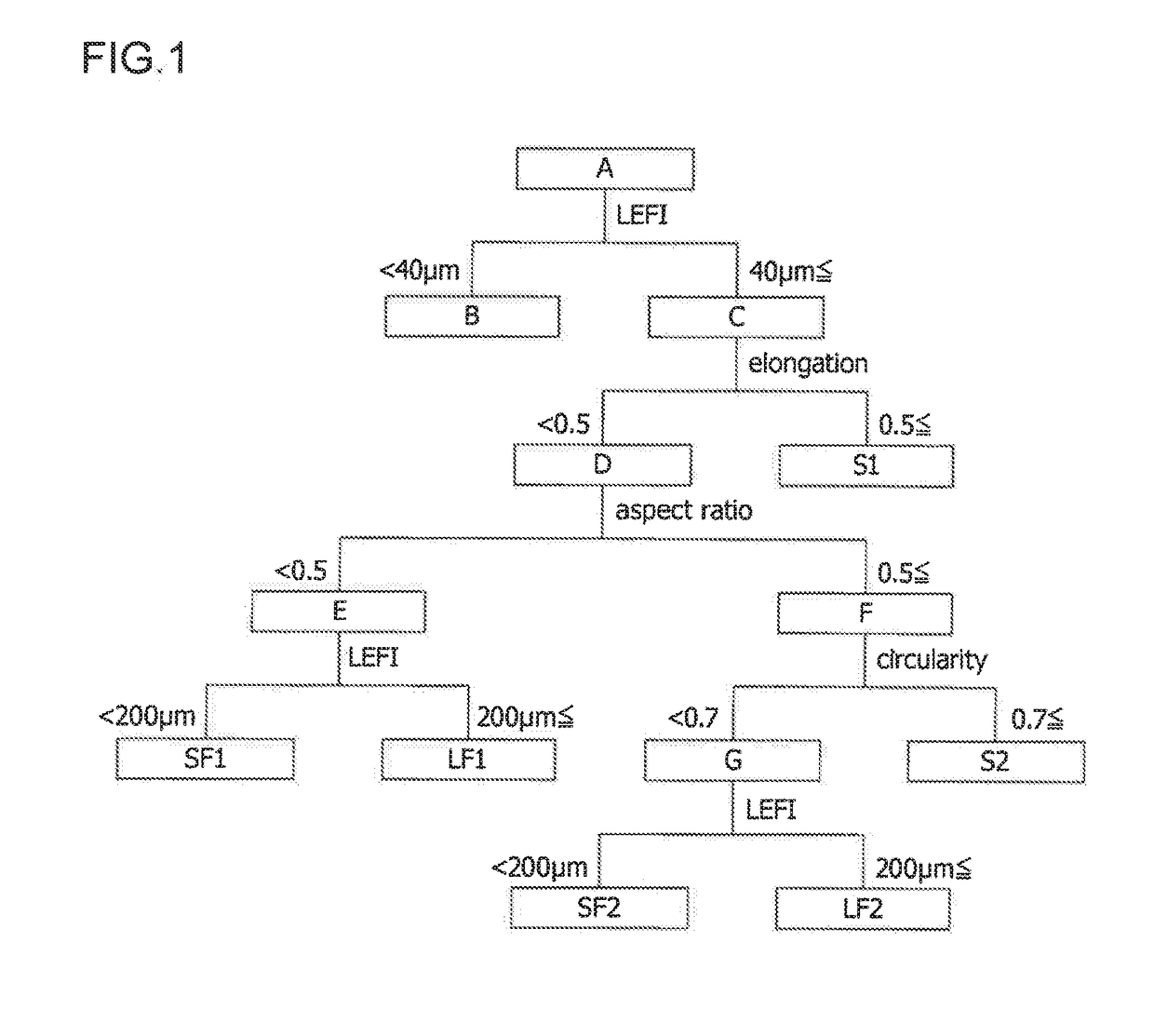Low-substituted hydroxypropyl cellulose, production method thereof, and solid preparation
- Summary
- Abstract
- Description
- Claims
- Application Information
AI Technical Summary
Benefits of technology
Problems solved by technology
Method used
Image
Examples
example 1
[0105]An internal stirring type reactor having an internal volume of 10 L was charged with 625 g of powdery Pulp A (600 g as an anhydrous portion) derived from wood and having a length-weighted mean width of 23 μm and a length-weighted mean length of 0.5 mm. The reactor was, while stirring, subjected to addition of 250 g of an aqueous sodium hydroxide solution having a concentration of 35% by weight. They were mixed at a jacket temperature of 45° C. for 30 minutes to obtain alkali cellulose containing 10% by weight of sodium hydroxide. Next, the reactor was purged with nitrogen and subjected to addition of 96 g (0.160 part by weight based on the anhydrous pulp) of propylene oxide. The resulting mixture was reacted at a jacket temperature of 60° C. for 2 hours while stirring to obtain 971 g of reaction product.
[0106]Next, the reactor was subjected to addition of 6562.5 g (100% of the neutralization equivalent) of 2% by weight acetic acid solution, and the resulting mixture was stirre...
example 2
[0112]Low-substituted hydroxypropyl cellulose was obtained in the same manner as in Example 1 except for the use of the powdery Pulp B derived from wood and having a length-weighted mean width of 21 μm and a length-weighted mean length of 0.5 mm. With regards to the low-substituted hydroxypropyl cellulose thus obtained, the hydroxypropoxy content, average particle diameter, volume fractions of various particles (long and short fibrous particles, spherical particles, and fine particles), compressibility, and angle of repose were determined in the same manner as in Example 1. The results are shown in Table 1.
example 3
[0113]Low-substituted hydroxypropyl cellulose was obtained in the same manner as in Example 2 except that the amount of propylene oxide was changed to 69 g (0.115 parts by weight based on the anhydrous pulp). With regards to the low-substituted hydroxypropyl cellulose thus obtained, the hydroxypropoxy content, average particle diameter, volume fractions of various particles (long and short fibrous particles, spherical particles, and fine particles), compressibility, and angle of repose were determined in the same manner as in Example 1. The results are shown in Table 1.
PUM
| Property | Measurement | Unit |
|---|---|---|
| Length | aaaaa | aaaaa |
| Length | aaaaa | aaaaa |
| Fraction | aaaaa | aaaaa |
Abstract
Description
Claims
Application Information
 Login to View More
Login to View More - R&D
- Intellectual Property
- Life Sciences
- Materials
- Tech Scout
- Unparalleled Data Quality
- Higher Quality Content
- 60% Fewer Hallucinations
Browse by: Latest US Patents, China's latest patents, Technical Efficacy Thesaurus, Application Domain, Technology Topic, Popular Technical Reports.
© 2025 PatSnap. All rights reserved.Legal|Privacy policy|Modern Slavery Act Transparency Statement|Sitemap|About US| Contact US: help@patsnap.com

